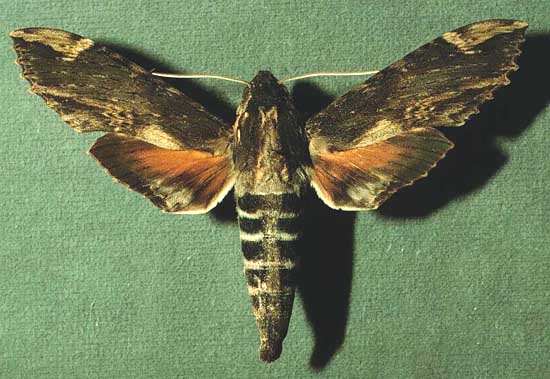
Erinnyis lassauxii male courtesy of Dan Janzen.
This site has been created by Bill Oehlke.
Comments, suggestions and/or additional information are welcomed by Bill.
TAXONOMY:
Family: Sphingidae, Latreille, 1802 |
|
|
Updated as per http://biological-diversity.info/sphingidae.htm (Belize), November 2007 Updated as per The Known Sphingidae of Costa Rica, November 2007 Updated as per More, Kitching and Cocucci's Hawkmoths of Argentina 2005, December 2009 Updated as per AN ANNOTATED CHECKLIST OF THE SPHINGIDAE OF BOLIVIA, December 2009 Updated as per personal communication with Ezequiel Bustos (Aguas Blancas, Salta, Argentina, 405m); December 2009 Updated as per personal communication with Valerie G. (larva, Zilker Preserve, Austin, Travis County, on talayote (Cynanchum racemosum), November 7, 2009); December 2009 Updated as per personal communication with Tzila "Z" Duenzl (Horseshoe Bend, Weatherford, Parker Co., Texas, August 30, 2011); September 2, 2011 Updated as per personal communication with Kevin McCollum (Erinnyis lassauxi, Fort Worth, Tarrant County, Texas, December 19, 2012); December 19, 2012 Updated as per personal communication with Vadim Kroutov (Erinnyis lassauxi female with dark hindwings, Rio Chuchuvi, Esmeraldas, Ecuador, 88mm); July 19, 2014 Updated as per personal communication with Ezequiel Bustos (Shilap revta. lepid. 43 (172) diciembre, 2015, 615-631 eISSN 2340-4078 ISSN 0300-5267), January 4, 2016 |

This site has been created by Bill Oehlke.
Comments, suggestions and/or additional information are welcomed by Bill.
TAXONOMY:
Family: Sphingidae, Latreille, 1802 |
Argentina is the specimen type locality.
The upperside of the forewing is dark brown with gray streaks along the inner margin and a gray patch at the tip of the wing. The upperside of the hindwing is dark brown with varying amounts of dark orange at the base.
Erinnyis ello has a lighter forewing than lassauxii; Erinnyis crameri lacks the stripes on the abdomen found on lassauxii .
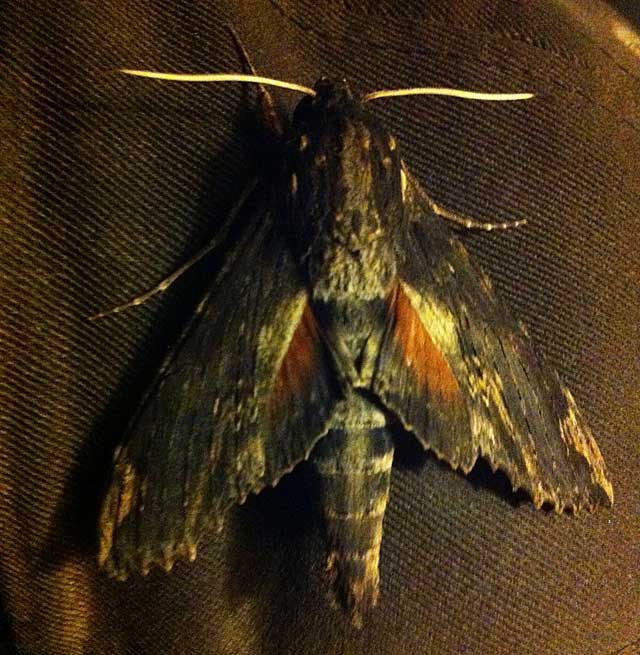
Erinnyis lassauxii, Fort Worth, Tarrant County, Texas,
December 19, 2012, courtesy of Kevin McCollum.
It is occasionally taken from July-October in Arizona and (December) Texas, and in September in south Florida.
During the night adults nectar at flowers, including bouncing bet (Saponaria officinalis). Valerie G. reports them on talayote (Cynanchum racemosum), a milkweed vine, November 7, 2009, at the Zilker Preserve, Austin, Travis County, Texa. The found larva pupated in November and the adult moth emerged on December 19, 2009.
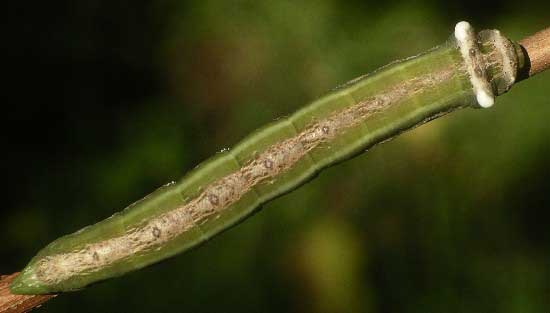
Erinnyis lassauxii fifth instar, Zilker Preserve, Austin, Travis County, Texas,
November 7, 2009, courtesy of Valerie G.
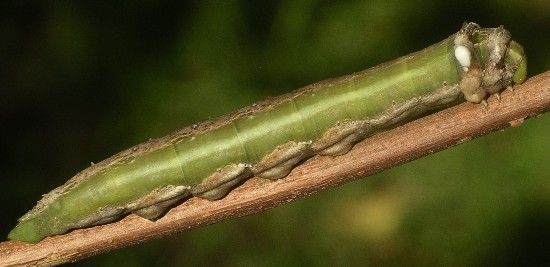
Erinnyis lassauxii fifth instar, Zilker Preserve, Austin, Travis County, Texas,
November 7, 2009, courtesy of Valerie G.
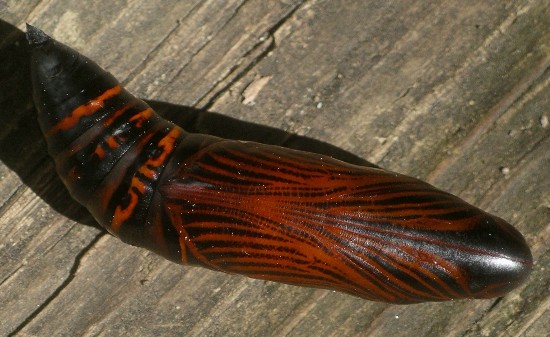
Erinnyis lassauxii pupa, Zilker Preserve, Austin, Travis County, Texas,
November 16, 2009, courtesy of Valerie G.
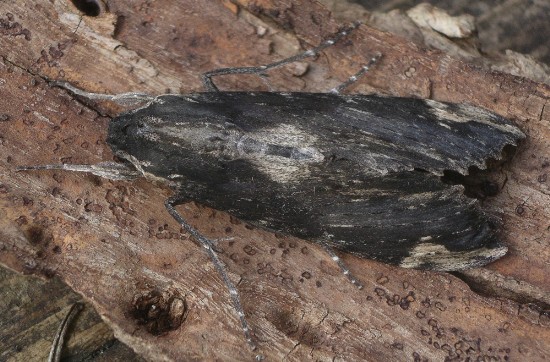
Erinnyis lassauxii ex pupa, Zilker Preserve, Austin, Travis County, Texas,
December 19, 2009, courtesy of Valerie G.
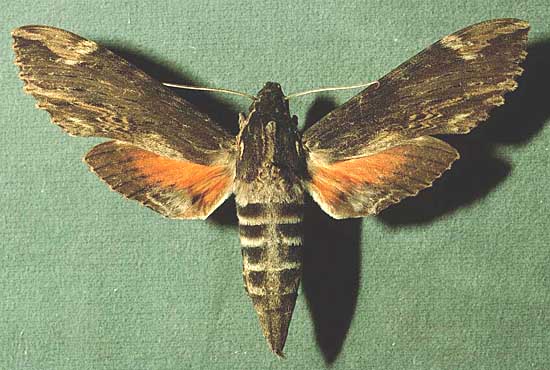
Erinnyis lassauxii female courtesy of Dan Janzen.
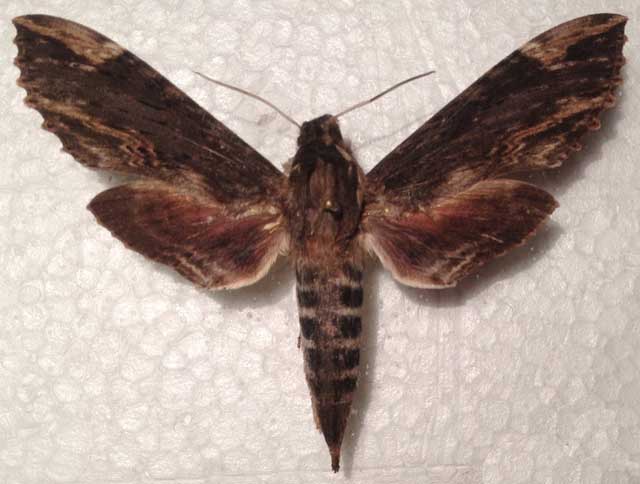
Erinnyis lassauxii female, 88mm, Rio Chuchuvi, Esmeraldas, Ecuador,
dark hindwings, courtesy of Vadim Kroutov.
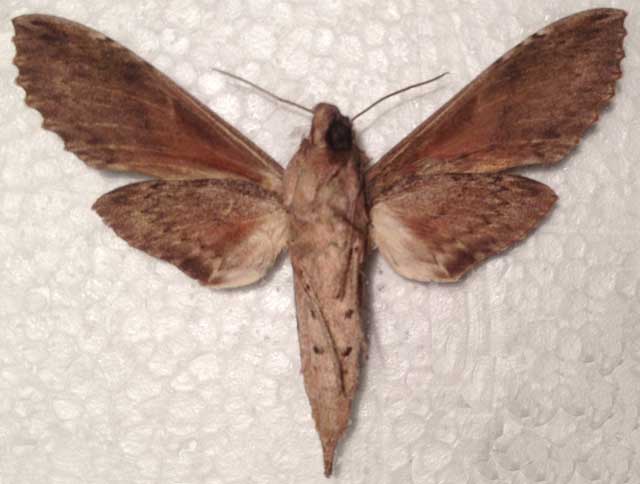
Erinnyis lassauxii female (verso), 88mm, Rio Chuchuvi, Esmeraldas, Ecuador,
dark hindwings, courtesy of Vadim Kroutov.


Larvae are subject to parasitization by Thyreodon apricus in the Ichneumonidae family.
Many thanks also to Tzila "Z" Duenzl who provides the images of Erinnyis lassauxii below.
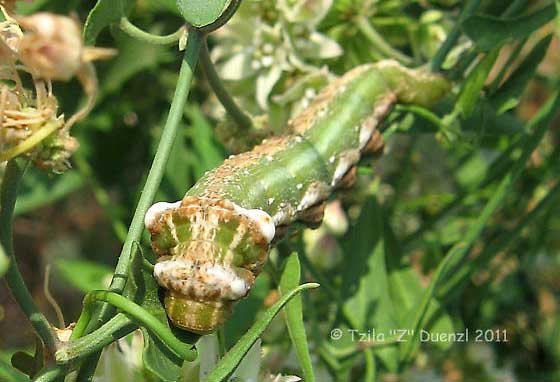
Erinnyis lassauxii, Horseshoe Bend, Weatherford, Parker County, Texas,
August 30, 2011, courtesy/copyright Tzila "Z" Duenzl.
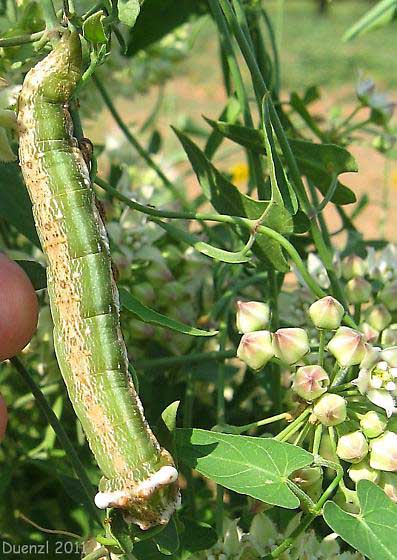
Erinnyis lassauxii, Horseshoe Bend, Weatherford, Parker County, Texas,
August 30, 2011, courtesy/copyright Tzila "Z" Duenzl.
"He says you may be interested in my pics of it for your site, so I am getting in touch with you. You can see the two pics I posted to Bugguide for ID. I have about thirty pics I of it. It is the most unusual caterpillar I have seen here. It was on a large Fringed Twinevine next to the runway. I am wondering if the white protuberances on its head would be from ingesting the sap of the Twinvine, and would make it poisonous."
Tzila "Z" Duenzl
I reply, "Z, Please let me know if you (sighting location) are in Hill County or Parker County. I do not know what causes the white protuberances. You are at about northern limits of its range in Texas. Thanks. Very nice photos. I need the county so I know what section to post it in. Yes, it is Erinnyis lassauxii.
Return to U. S. A. Table
Return to Sphingidae Index
Return to Dilophonotini Tribe
Enjoy some of nature's wonderments, giant silk moth cocoons. These cocoons are for sale winter and fall. Beautiful Saturniidae moths will emerge the following spring and summer. Read Actias luna rearing article. Additional online help available.
Use your browser "Back" button to return to the previous page.
This page is brought to you by Bill Oehlke and the WLSS. Pages are on space rented from Bizland. If you would like to become a "Patron of the Sphingidae Site", contact Bill.
Please send sightings/images to Bill. I will do my best to respond to requests for identification help.
 Show appreciation for this site by clicking on flashing butterfly to the left. The link will take you to a page with links to many insect sites. |